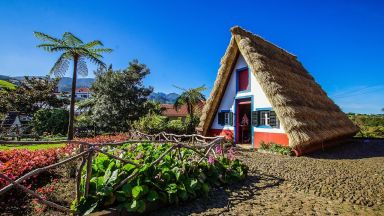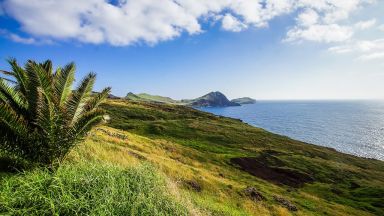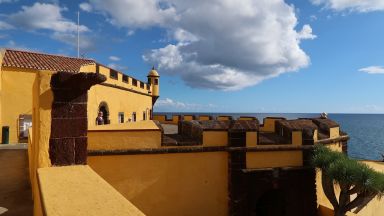Viana do Castelo: The Complete Guide
Viana do Castelo, situated amidst an estuary of the Lima River and rolling hills, is a charming city in northern Portugal that is renowned for its traditional character. Despite being a significant hub for deep-sea fishing, as well as housing industries such as pyrotechnics, wood manufacturing, ceramics, and boat building (which have experienced a resurgence after years of decline), the city has managed to maintain its old-world ambiance. Its streets are quaint and narrow, adorned with Manueline-style manors, and occasionally, one can spot an ox cart with wooden wheels clattering along the cobbled lanes.
Viana do Castelo is famous for its local pottery and handicrafts, but it is most well-known for its regional festivals. The annual Festa de Nossa Senhora de Agonia (Festival of Our Lady of Agony), held in late August, is the most prominent of these events. During this festival, women dress up in vibrant regional attire, including bold hues of orange, scarlet, and Prussian blue, paired with layers of golden necklaces featuring heart- and cross-shaped pendants.
Visiting Viana do Castelo for the first time and wondering what are the top places to see in the city? In this complete guide, I share the best things to do in Viana do Castelo on the first visit. Top help you plan your trip, I have also included an interactive map and practical tips for visiting!
This website uses affiliate links which earn a small commission at no additional cost to you.
11 Best places to See in Viana do Castelo
This complete guide to Viana do Castelo not only tells you about the very best sights and tourist attractions for first-time visitors to the city but also provide insights into a few of our personal favorite things to do.
This is a practical guide to visiting the best places to see in Viana do Castelo and is filled with tips and info that should answer all your questions!
Museu de Artes Decorativas

Location: Museu de Artes Decorativas, Largo de São Domingos, Viana do Castelo, Portugal | Hours: 10am-6pm Tue-Fri, 10am-1pm & 3-6pm Sat & Sun | Price: Tue-Fri €2, Sat & Sun free | Website | Distance: 0.10km
Visiting Museu de Artes Decorativas
Gil Eannes Ship

Location: Gil Eannes Foundation, Viana do Castelo, Portugal | Distance: 0.40km
Visiting Gil Eannes Ship
Forte de Santiago da Barra

Location: Forte de Santiago da Barra, Viana do Castelo, Portugal | Hours: From Monday to Friday: 9 am - 12:30 pm / 2 pm - 5:30 pm | Distance: 0.40km
Visiting Forte de Santiago da Barra
Praça da República (Viana do Castelo)

Location: Praça da República, Viana do Castelo, Portugal | Distance: 0.50km
Visiting Praça da República (Viana do Castelo)
Casa dos Nichos
Location: Casa dos Nichos, Rua de Viana, Viana do Castelo, Portugal | Hours: 10:00 AM - 1:00 PM, 2:00 PM - 5:00 PM | Distance: 0.50km
Visiting Casa dos Nichos
Igreja da Misericórdia de Viana do Castelo

Location: Igreja da Misericórdia, Republic Square, Viana do Castelo, Portugal | Distance: 0.60km
Visiting Igreja da Misericórdia de Viana do Castelo
Funicular de Santa Luzia

Location: Elevador de Santa Luzia, Avenida 25 de Abril, Viana do Castelo, Portugal | Distance: 0.60km
Visiting Funicular de Santa Luzia
Sé Catedral de Viana do Castelo (Igreja Matriz)

Location: Sé Catedral de Viana do Castelo, Largo Instituto Histórico do Minho, Viana do Castelo, Portugal | Hours: 9am-6pm Mon-Fri | Distance: 0.60km
Visiting Sé Catedral de Viana do Castelo (Igreja Matriz)
Santuário de Santa Luzia

Location: Santuário de Santa Luzia, Viana do Castelo, Portugal | Website | Distance: 1.10km
Visiting Santuário de Santa Luzia
Citania de Santa Luzia

Location: Citânia de Santa Luzia, Monte de Santa Luzia, Viana do Castelo, Portugal | Hours: 10am-1pm & 2-6pm Tue-Sun | Price: adult/child €2/free | Distance: 1.50km
Visiting Citania de Santa Luzia
Capela de Nossa Senhora da Agonia

Location: Capela de Nossa Senhora da Agonia, Travessa do Pombal, Caminha, Viana do Castelo, Portugal | Distance: 19.90km
Visiting Capela de Nossa Senhora da Agonia


